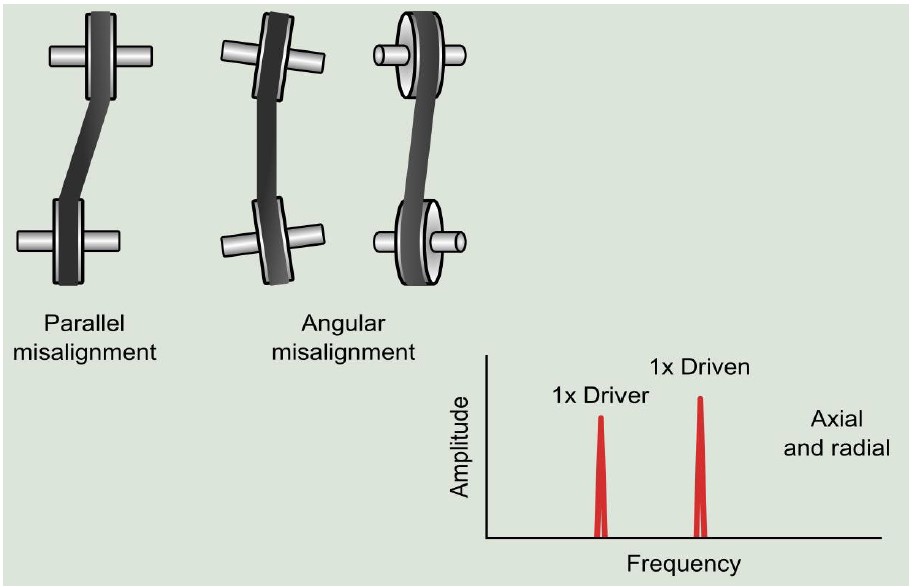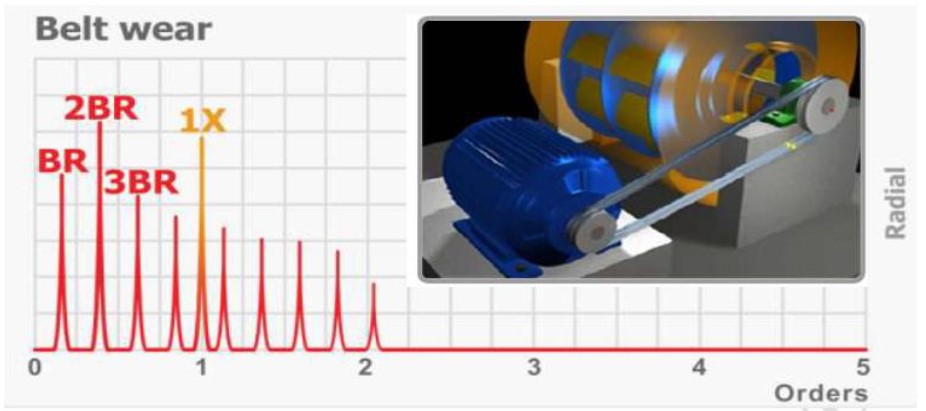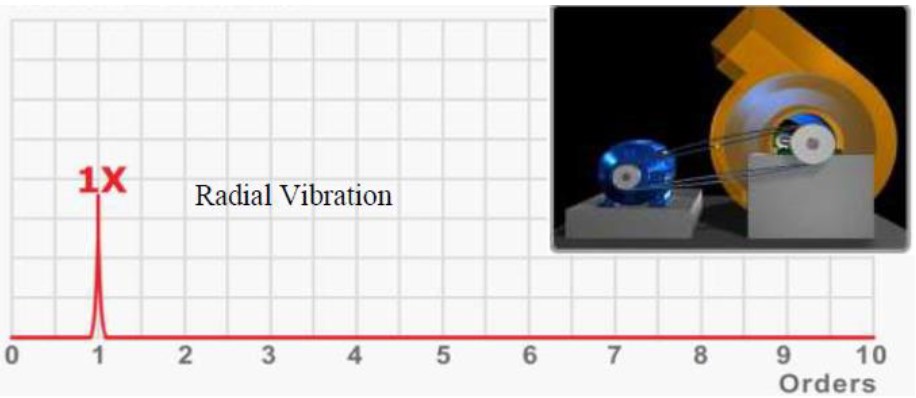Belts
Worn, loose and mismatched belts are considered a major problem in rotating machinery. Belt defect frequencies are of the subharmonic type. Belt drive problems, including shaft misalignment, pulley misalignment, belt wear, belt resonance, belts that are too tight, belts that are too loose, pulley eccentricity, and bent shafts, can be fairly straightforward to detect, but can be much more difficult to specifically diagnose and repair. This is mainly due to the wide range of problems that can occur during the installation and assembly of a belt drive, the difficulty of carrying out operational tests of the belts and the possibility that other influences (base) will have some influence. For timing belt drives, it is useful to know that high timing belt frequency amplitudes indicate pulley wear or misalignment. The band frequency is given by the formula:
Belt frequency = (pulley revolutions x pulley pitch diameter) / belt length
Misalignment of pulleys
There are two types of misalignment as shown in the figure. These conditions not only result in destructive vibrations, but also cause accelerated wear of the belt and pulleys. Misalignment of the pulleys causes high vibrations 1X, mainly in the axial direction. The ratio of the driving amplitudes to the driven revolutions depends on the measurement position, the relative weight and the stiffness of the frame. In the case of misalignment of the pulley on the fans, the highest axial vibrations will be at the speed of the fan. When a belt drives a suspended rotor that is in an unbalanced condition, this will need to be resolved by phase analysis.

Belts wear
Worn pulleys or belts can also increase vibration at certain rotational frequencies. However, belt wear is more often manifested by increased slippage and drive wear. Belt defects appear in the vibration spectrum as subsynchronous peaks, often with harmonics. The figure shows a typical spectrum for a faulty belt. If the belt wears, you will see spikes in belt speed and harmonics. The highest amplitude peak in the series will often be twice the band frequency. The key frequency is known as the “belt speed” or “fundamental frequency of belt passage”. It is the speed at which a point on the belt passes a fixed reference point. It is always less than the speed of both pulleys.

Eccentric pulleys
Eccentric or unbalanced pulleys cause maximum vibration at 1X pulley rotation speed. To correct this condition, it may sometimes be possible to balance the eccentric pulleys by attaching washers to the taper lock screws. However, even if the eccentricity is balanced, it will still induce vibration and cause fatigue stress in the belt.
Belts resonance
Belt resonance can cause high amplitudes if the natural frequency of the belt happens to coincide with the speed of the driving or driven pulley. The natural frequency can be changed either by changing the length or by tensioning the belt. Spectrum: If the natural frequency of the belt matches the speed of any of the driven components, then you would expect the amplitude to increase by 1X as shown in the figure. The base of the tip may be wider than normal.
